London: 2024 Business Aviation Destination Guide
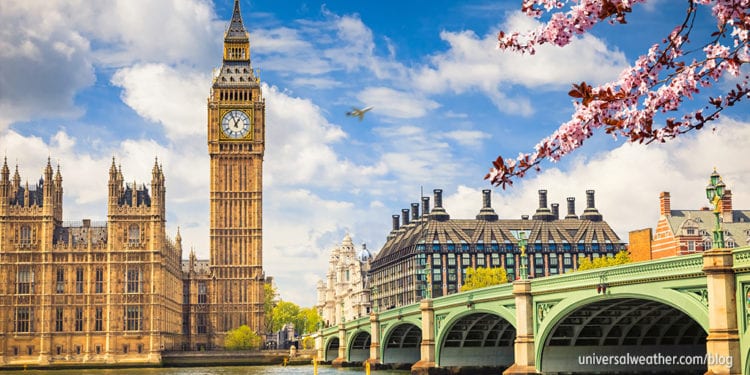
Update: London airspace will be closed to general aviation at night in the summer of 2024, marking a first for the city. Traditionally, London-Stansted (EGSS) has provided limited night-time access for business aviation through a small number of ad-hoc slots. This year, these slots are being withdrawn to accommodate airline traffic that extends into the night. The slot system at Stansted is managed by the airport and voted and approved by the airlines, whose voting power means the business aviation community has little power to stop the airline lobby. Read more here.
For more information on operating to the UK, visit our destination and regulatory guides:
The London area is an easy GA operating environment and a pleasurable experience for crews. All airports have excellent handling facilities and services. However, when considering airport options, be mindful of what part of London you’re heading to, along with the flexibility implications of airports with limited operating hours and peak periods of commercial activity.
The following is an overview of what you need to know:
London area airport options
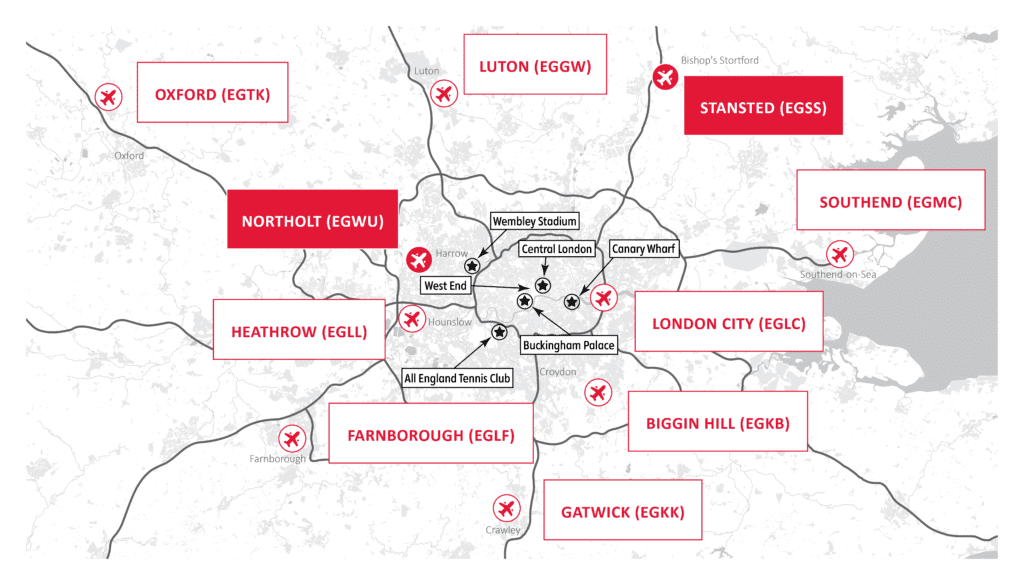
| Stansted | Luton | Farnborough | Northolt | London City | Gatwick | Biggin Hill | Oxford | Heathrow | Southend | |
|---|---|---|---|---|---|---|---|---|---|---|
| Type | Commercial & GA | Commercial & GA | GA only | Military & GA | Commercial & GA | Primarily Commercial, Cargo & some GA | GA only | Primarily GA with some commercial traffic | Primarily Commercial, & some GA | Type – Commercial and GA |
| Hours | 24/7 | Summer Hours: 0700L to 2300L | 0700-2200L Mon-Fri; 0800-2000L Sat-Sun | 0800-2000L Mon-Fri; 0800-1500L Sat; 1200-1900L Sun | 0630-2130L Mon-Fri; 0630-1230L Sat; 1230-2130L Sun | 24/7 but no night slots for GA | 0630 – 2300L Weekdays; 0800 – 2200L Weekends & Public Holidays | 24/7 but no night slots for GA | Hours 24/7 - but handling subject to availability | |
| Distance to London City Center | 40 miles, 60-90 min drive; 47 min by train | 35 miles, 60-90 min drive | 38 miles, 60-80 min drive | 12 miles, 35-min drive | 9 miles, 30-45 min drive | 28 miles, 60-90 min drive | 16 miles, 45-60 min drive | 60 miles, 90-120 min drive | 14 miles, 30-60 min drive | 44 miles – 1hr 46 min drive |
| Distance to Wembley Stadium | 50 miles, 60-90 min drive | 30 miles, 40-60 min drive | 40 miles, 50-70 min drive | 10 miles, 20-30 min drive | 20 miles, 45-60 min drive | 60 miles, 60-90 min drive | 35 miles, 60-90 min drive | 60 miles, 70-100 min drive | 15 miles, 30-45 min drive | 50 miles / 1hr 48 min drive |
| Distance to West End | 40 miles, 60-90 min drive | 35 miles, 60-90 min drive | 40 miles, 60-90 min drive | 15 miles, 30-45 min | 10 miles, 30-45 min drive | 30 miles, 60-90 min drive | 25 miles, 45-60 min drive | 60 miles, 70-100 min drive | 20 miles, 40-60 min drive | 45 miles / 1hr 45 min drive |
| Distance to Canary Wharf | 35 miles, 60-90 min drive | 50 miles, 70-100 min drive | 50 miles, 70-100 min drive | 25 miles, 60-90 min drive | 5 miles, 10-20 min drive | 45 miles, 60-90 min drive | 20 miles, 40-60 min drive | 70 miles, 90-120 min drive | 25 miles, 60-90 min drive | 38 miles / 1hr drive |
| Slots required | Yes | Yes | No | Yes | Yes | Yes | No | Yes | Yes | Yes |
| PPR | No | No | No | Yes | No | No | No | No | No | No |
| GA Parking Availability | Good | Low | Good | Good | No overnight | 1 day max | Good | Good | Medium | Yes |
| Parking Cost | $$ | $$$$$ | $$$ | $$ | $$$$$ | $$$ | $$ | $$ | $$$$ | $$ |
| Congestion | Minimal | Extremely congested | Minimal | Minimal | Busy | Busy | Minimal | Minimal | Busy | Minimal |
The London area has nine airports available to general aviation (GA), all with high-quality fixed-base operators (FBOs), clearance facilities, and VIP handling services. However, there’s no perfect London Area airport, as the best airport for your particular mission will depend upon your destination in the metropolitan or surrounding area, aircraft operating requirements, and operational flexibility in terms of airport curfews and other limitations.
Many considerations beyond airport location must be factored into the mix when determining the best London area airport for your particular mission. For example, suppose your passengers require flexibility for potential schedule changes. In that case, it’s best to choose a location with limited curfews and peak commercial activity periods.
For example, if the primary passenger is likely to want to depart after midnight, it would be best to avoid Luton (EGGW), Farnborough (EGLF), and Biggin Hill (EGKB) as they close in the evening with no airport overtime available.
While the majority of business aviation traffic to the London area goes to Stansted (EGSS), Luton (EGGW), and Farnborough (EGLF), there are five other airports available. These are Biggin Hill (EGKB), Northolt (EGWU), London City (EGLC), Heathrow (EGLL), and Gatwick (EGKK). All of these airports have pros and cons to consider, depending on your particular mission requirements.
London Stansted (EGSS)
London Stansted (EGSS) is a 24/7 airport of entry (AOE) with plenty of GA parking and complete support services with multiple transportation options into London.
Airport slots are required, and there are restrictions to consider for noisier aircraft. For example, a Global Express may depart 24/7, while a private Gulfstream 2 may not be able to operate after 2330 local due to noise considerations. Aircraft hush kitted to Stage 3 standards are permitted, based on submitted noise certificates. Still, while they may be able to arrive 24/7, departures may be restricted after 2330 local.
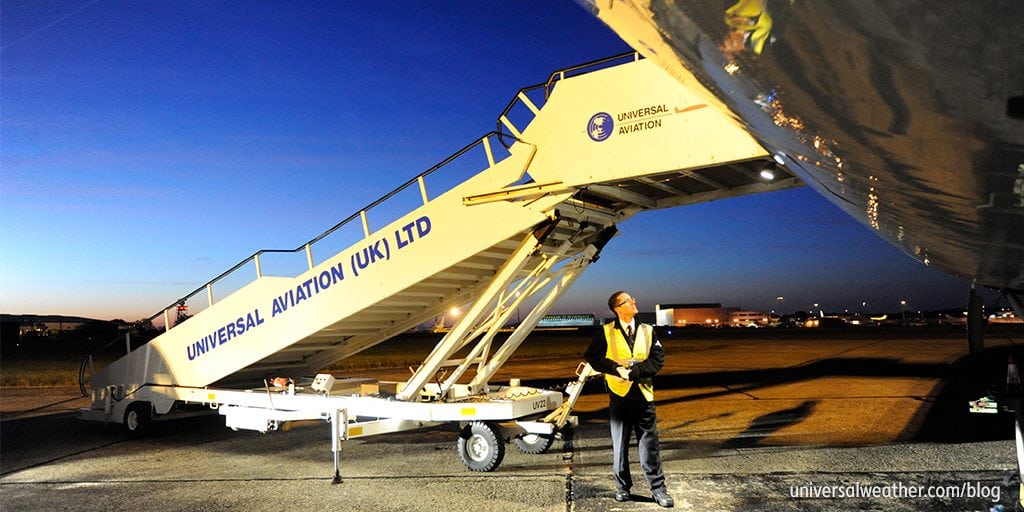
Universal Aviation’s award-winning Stansted location is available 24/7 to assist. For more information on this location, including a 360 view of the FBO, visit Universal Aviation London-Stansted online.
Our London-Stansted destination guide article has a complete breakdown on operating to the airport.
London Northolt (EGWU)
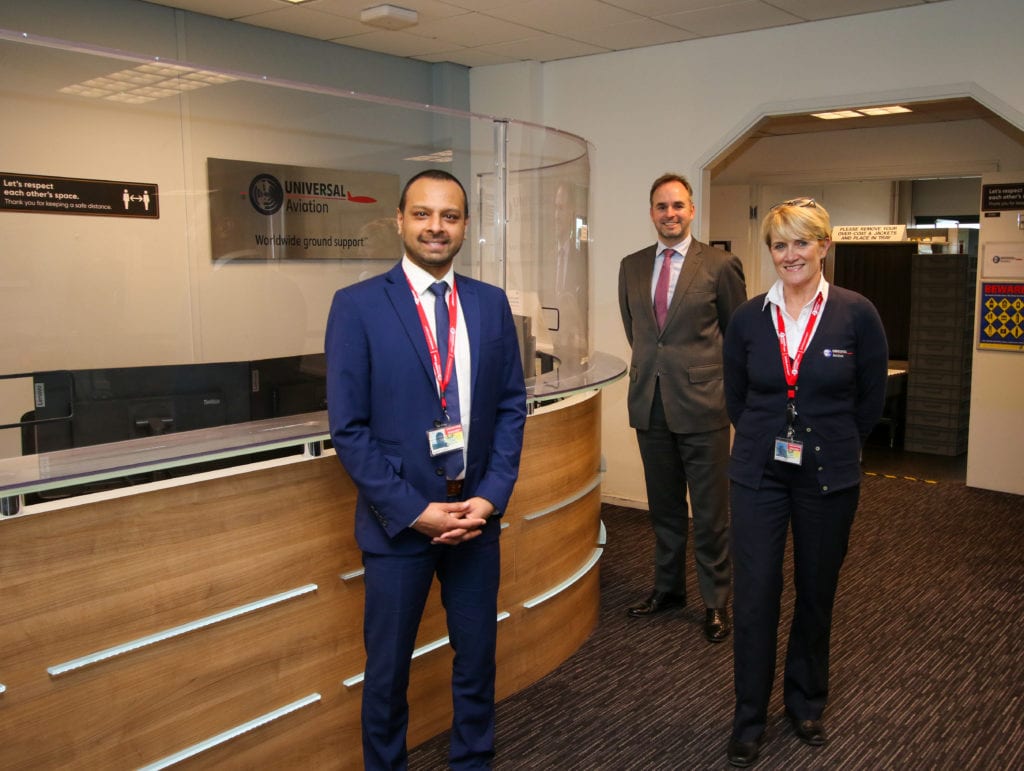
Historically Northolt was a little tricky to get in and out of for some operators. In 2021, Universal Aviation UK partnered with the Royal Air Force to be the sole FBO and ground handling provider at Northolt. Since then, Universal Aviation UK – London Northolt has focused on making Northolt an easier, more accessible option that business aircraft operators will want to use as an alternative to other more congested airports close to the city.
Northolt Airport is an excellent airport option for business aviation operators with business in Central London due to its proximity to the city. It is also located nearby Heathrow Airport, making crew swaps easy. Recent increases to the airports daily operating hours now make it easy for operators to fly in and out for same-day business in Central London.
Northolt is a military airport managed by the Royal Air Force. Because it is an active military airport. It is highly secure while also offering more privacy and less congestion than other airports in the region. It is also an extremely easy airport to operate in and out of.
In May 2021, Northolt announced extended hours, 08:00L to 20:00L making it an even more appealing option for business travelers.
Our London-Northolt destination guide article has a complete breakdown on operating to the airport.
Luton (EGGW)
EGGW is also open 24-hours during the winter period but closed during the summer at night between 23:00 L and 07:00L AOE with complete GA support services and two FBOs available. EGGW has very specific noise profiles operators must follow on departure, and fines for infractions are routine. This location has less GA parking availability than EGSS. It is the most expensive London area airport in terms of parking – which can run over 2,000 USD/night for a Global or larger Gulfstream aircraft.
Heathrow (EGLL) and Gatwick (EGKK)
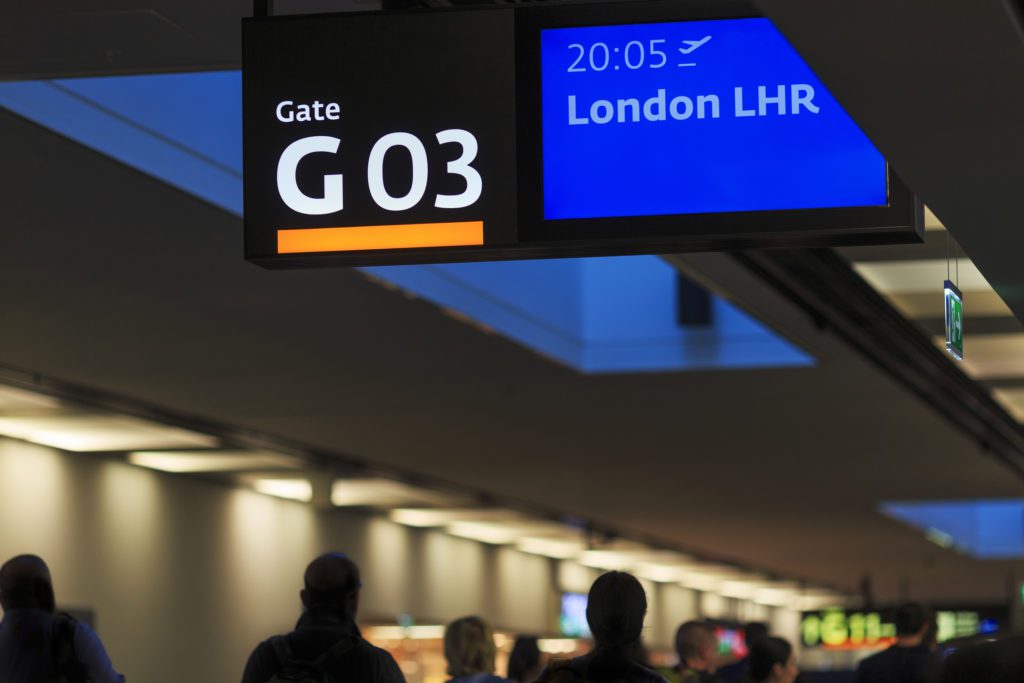
While EGLL and EGKK are 24/7 airports, night slots are not usually available for GA. EGLL is one of the busiest airports in the world, operating at about 98% capacity. If you need to change a confirmed slot time, it may be hours before the next slot becomes available. This limits operating flexibility, especially if you have passengers who do not always keep to schedule. Special customs, immigration, and quarantine (CIQ) clearance is possible within one of two EGLL VIP clearance areas — the Royal and Windsor suites — for an additional charge of about 1,500 £ per use.
Farnborough (EGLF)
EGLF operates 0700-2200 local Monday-Friday, 0800-2000 local on weekends and bank holidays, and is closed on Christmas and Boxing Day. Note that EGLF is a Stage 4 airport and very strict on noise. Therefore, based on their noise certificate, stage 3 aircraft that meet Stage 4 noise standards may operate to this location.
Biggin Hill (EGKB)
EGKB operates 0630-2200 local Monday-Friday and 0900-2000 local on the weekend and bank holidays. This location has two FBOs available and complete GA support services. Note that GA departures 0630-0730 local and arrivals 2100-2200 local are only possible with prior permission. While EGKB may look closer on the map to specific London destinations, keep in mind that there are no major road connections, and drive times may be as long or longer as from other airports.
London City (EGLC)
EGLC is positioned close to central London and the Millennium Dome but has a short 4,948 ft. runway. As a result, there are aircraft performance issues to consider due to a required steep glide slope. In addition, the parking ramp at EGLC is very small, and it’s usually not possible to obtain more than a few hours parking. Operating hours are 0630-2130 local Monday-Friday, 0630-1230 local Saturday, 1230-2130 local Sunday, and 0900-2130 on bank holidays. Due to peak commercial activity hours, restricted GA operation hours, and high costs, EGLC is considered inconvenient for many operators.
Airport slots and PPR requirements
Of the eight London area airports available to GA, all but EGKB and EGLF have airport slot requirements. In the case of EGWU, prior permission required (PPR) is mandated. In addition, you must submit full crew and passenger information and a copy of your aircraft insurance for both arrival and departure.
Summer Night Slot Ban
London airspace will be closed to general aviation at night in the summer of 2024, marking a first for the city. Traditionally, London-Stansted (EGSS) has provided limited night-time access for business aviation through a small number of ad-hoc slots. This year, these slots are being withdrawn to accommodate airline traffic that extends into the night. The slot system at Stansted is managed by the airport and voted and approved by the airlines, whose voting power means the business aviation community has little power to stop the airline lobby.
While daytime access remains unaffected, avoiding the nighttime restrictions will require careful planning. Despite the new limitations, Stansted continues to be the preferable option for business aviation. Keep in mind that without a night slot, the last available slot would be 23:10L, and late running departures will be refused departure clearance should their pax be running late, for example. We were made aware of a situation involving a recent flight (not handled by our Universal Aviation UK Stansted team) that was late, and the passengers and crew had to stay on the aircraft all night and depart in the morning.
Read more on the Summer Night Slot Ban here.
Location in relation to destination
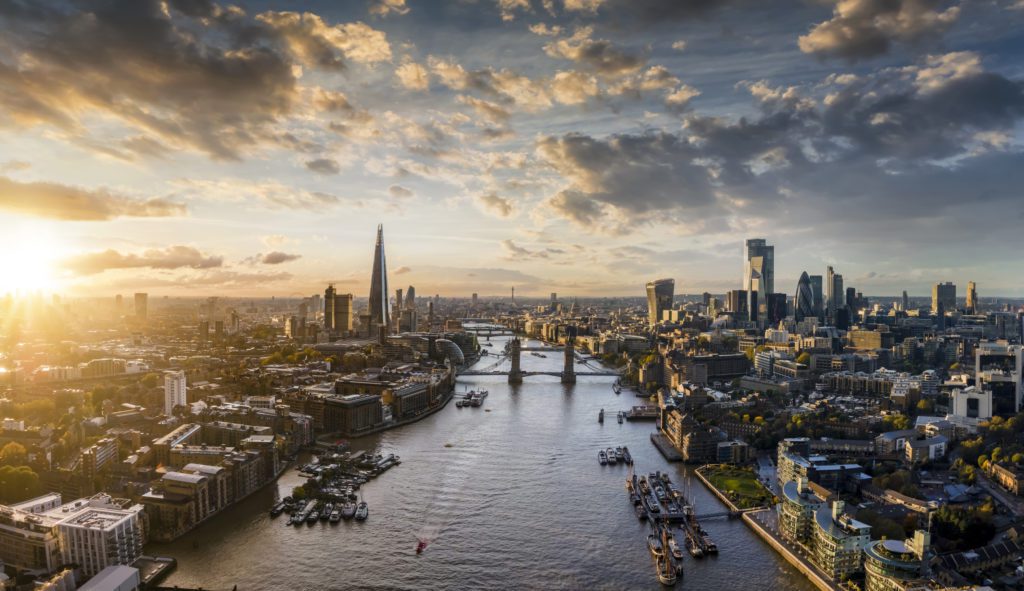 London is a large metropolitan area, more than 30 miles across, so your meeting or hotel location will likely impact where you choose to land.
London is a large metropolitan area, more than 30 miles across, so your meeting or hotel location will likely impact where you choose to land.
Northolt is London’s closest business airport to Central London. It is also an excellent option for making crew swaps due to its proximity to Heathrow. Northolt to Park Lane Central London is 30 minutes by car. The same journey from most other London airports would take over 1 hour 30 minutes.
Northolt also has the capability for quick turnarounds allowing drop off of pax for business in Central London and then repositioning the aircraft to an alternative airfield in London if necessary.
The financial and Canary Warf districts are on the east side of London and may favor stopping at EGKB or EGSS.
Suppose your destination is a tech or automotive company on the city’s west side or M4 corridor. In that case, EGLF may be a good choice.
For access to the north of London or central London, EGGW is often preferred.
However, many operators seldom find much difference in driving time into central London from either EGSS, EGGW, or EGLF.
Permit requirements
While private non-revenue operations do not require permits, charter (non-scheduled commercial) operators do. Permit request lead times of 48-72 hours are recommended, although charter permits may be processed on shorter notice. Note that permits are processed by the Civil Aviation Authority (CAA) only Monday-Friday 0900-1700 local, and it’s essential to supply all required documentation with the first request. Once a permit is approved, validity is quite generous with a 48-hour window for arrival/departure. Schedule changes are not really an issue. However, suppose you need to change origin or destination airports. In that case, CAA must re-approve before you conduct that leg, and it occasionally trips up some operators.
Services, security, and credit
All eight London area airports offer first-rate handling and support services along with ground support equipment (GSE) for most general aviation (GA) aircraft models. However, the London area can be a rather expensive operating environment from the handling, parking, and services perspective. Therefore, we recommend that operators shop around for the best airport option and the best deal. Ground handlers will be happy to provide cost quotes to help you better refine operating options.
In most cases, you’ll have more than one fixed-base operator (FBO) to choose from. All London area airports are highly secure with high fencing, routing patrols, adequate airside access controls, and a visible airport police presence. Aircraft guards, if required, can be arranged, and hangar accommodation for transient aircraft is often possible.
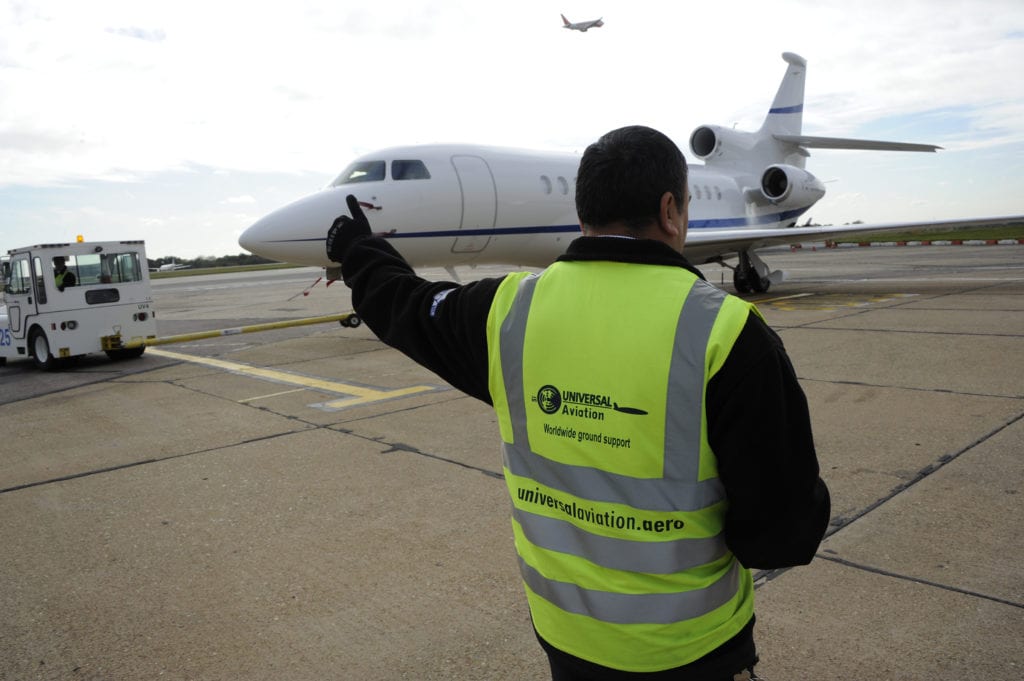
For more information and assistance on ground handling in the UK, Universal Aviation UK – Stansted can help.
Aviation fuel costs
Another important consideration is the fuel cost that you will encounter when traveling to the London area. For example, EGGW fuel prices are approximately 37% higher than fuel at EGSS. Note that there may be a considerable difference, so it’s worth obtaining a fuel quote in advance, as this may make one airport more attractive in terms of price.
In-flight catering and security screening
Some of the best in-flight catering options in the world are available in the London area, including high-end commercial in-flight catering, specialty aviation caterers, and restaurant/hotel options. When sourcing catering directly from local restaurants or hotels, be sure to check on any security screening limitations that may impact your ability to bring cuisine through security. Heathrow (EGLL), Gatwick (EGKK) have mandatory screening of all passenger and crew luggage — making it difficult for the crew to bring an item such as a gallon of soup out to the aircraft. Other London area airports, including Stansted (EGSS) and EGGW, do not routinely screen passenger or crew luggage on part 91 flights if the aircraft’s maximum takeoff weight (MTOW) is under 45 tons. Should you wish to offload in-flight catering and store it for the next departure, this may be possible with advance arrangement, depending on the food items and handler has access to appropriate storage facilities at the airport.
Hotel considerations
Good quality crew accommodations options are available close to all eight London area airports. Typical prices for 4-star airport area crew rooms run about 125 £/night. However, for crew who prefer to stay in central London, some of the best 4- and 5-star accommodations in the world can be found, with 4-star rooms often running 180-200 £/night, depending on season and local event activity. Click here for more information on hotel accommodations in the UK.
Local transport
We recommend that crew consider prepaid transport (car with driver) and having your ground handler suggest a preferred and vetted provider for safety and convenience. Although public taxis in London are excellent, they’re often unable to find FBO locations easily. As a result, some crews attempting to arrange transport on their own have become lost in an unfamiliar area. At EGSS and EGLL, public rail links are available directly from the airport to the city center.
You can get a free quote for ground transportation through Drivania Chauffeurs.
Tech stops
EGSS is recommended tech stops as they operate 24/7 with 24/7 CIQ clearance available. For example, EGSS has a 10,000 ft. runway, a GA ramp located on the other side of the field separate from schedule commercial activity, and good airline links for crew repositioning purposes.
CIQ clearance
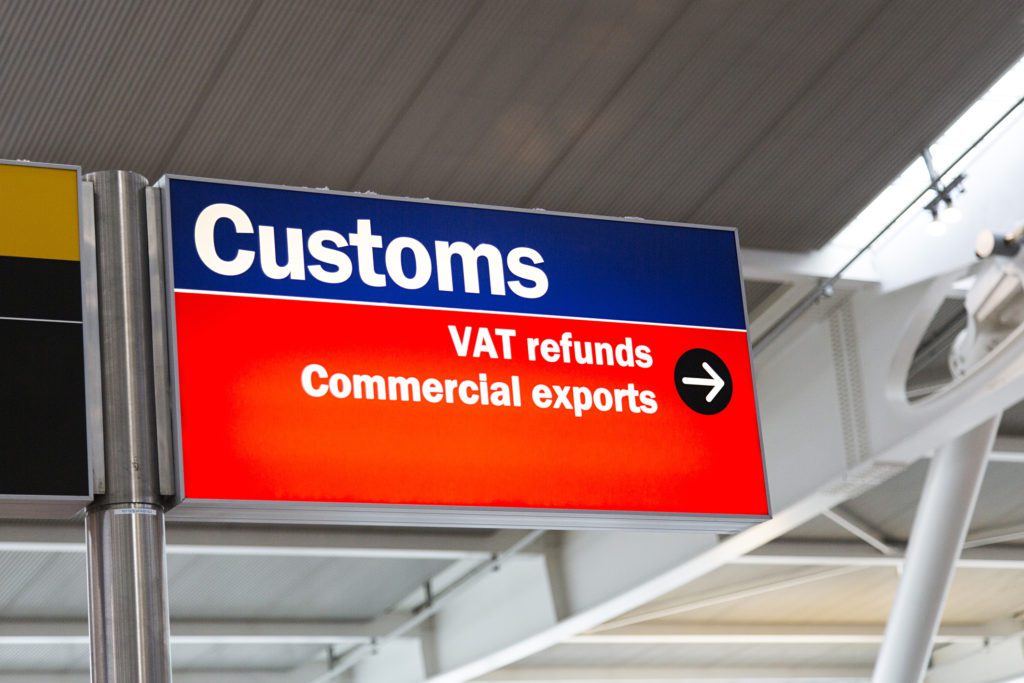 Customs, immigration, and quarantine (CIQ) clearance in the UK and London Area airports is usually a very straightforward procedure. Still, there are specific strict rules to be aware of, and that must be complied with. By working with your 3rd-party provider and ground handler in advance, express CIQ processing options are often available.
Customs, immigration, and quarantine (CIQ) clearance in the UK and London Area airports is usually a very straightforward procedure. Still, there are specific strict rules to be aware of, and that must be complied with. By working with your 3rd-party provider and ground handler in advance, express CIQ processing options are often available.
CIQ authorities will advise where you’ll clear on international arrival. Clearance may be in an FBO, the main terminal, onboard the aircraft, or via a ‘remote clearance.’ CIQ procedures are usually within an FBO, and the process is relatively standardized at all airports of entry (AOEs). If you’ve allowed sufficient lead time, you may qualify for ‘remote clearance’ where you do not need to physically interact with CIQ officials on arrival. To request remote clearance, submit crew and passengers’ details to the ground handler, who will forward the information to the UK Border Force. They’ll do checks before your arrival, confirm all documentation is correct upon landing, and release the remote clearance. This option is possible at most London area airports. Still, it’s always essential to provide sufficient lead time for the UK Border Force to do its checks.
Regulatory considerations
The UK government extended the APD to General Aviation (GA) on April 1, 2013. The good news is that 3rd-party providers, and the industry as a whole, have worked with HM Revenue and Customs (HMRC) to find solutions and clarify the processes for operators.
Onboard pets
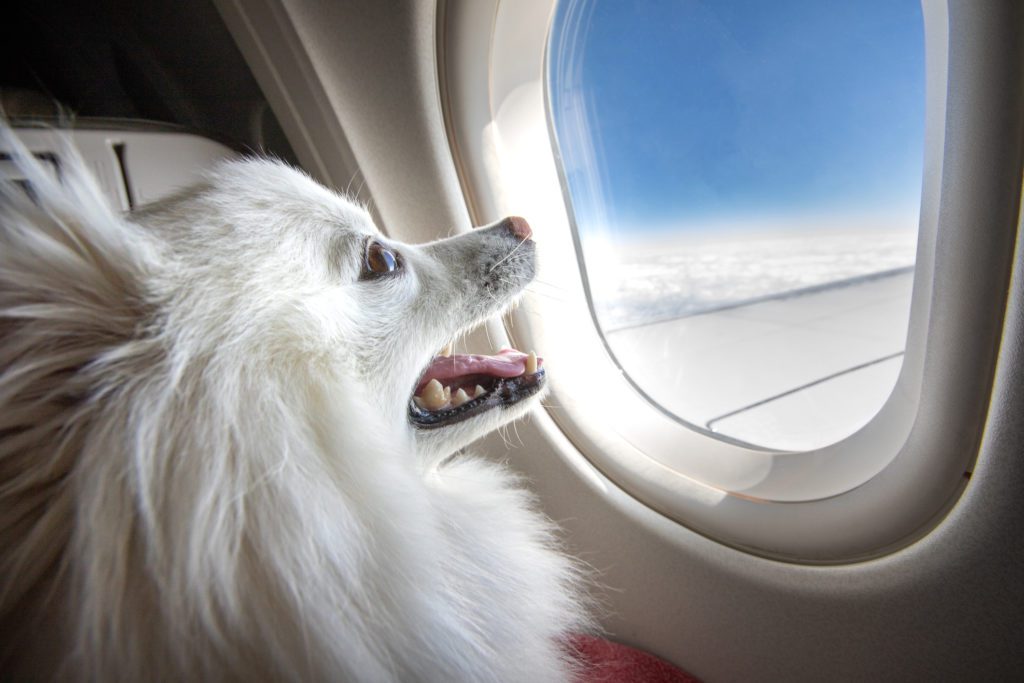
Temporary importation of personal pets into the UK is possible, but only for certain types of pets at certain airports. For example, GA operations may bring in a dog, cat, or ferret but only at four airports in the London area — at Stansted (EGSS), Biggin Hill (EGKB), Luton EGGW, and Farnborough (EGLF). Be aware that strict procedural and health requirements are in place, and your aircraft must be on an approved operator list. In addition to having up-to-date vaccination and health records, the pet must have had a rabies vaccination within the past six months and treatment for tapeworm 48 hours before arrival. Pet health details need to be forwarded to your handler at least 24 hours in advance so that they can coordinate the pet clearance process with a local pet processing company. On arrival at EGSS, EGGW, EGKB, or EGLF, a ‘pet representative’ will come on board to scan the animal’s microchip and ensure all the records match up. It is essential to note your operation must be an approved pet carrier and that an AOC is required when applying to DEFRA.
Potential issues with pet importation
While the process of importing a pet into the UK is very doable with proper research and pre-planning, it’s important to follow all the rules. For example, if you land with a pet at a non-approved London area airport, you’ll likely encounter issues. Authorities may allow you to be permitted or immediately depart. Still, you run the risk of having the pet taken into quarantine for months.
Weapons onboard
It’s allowable to land your GA aircraft in the UK with weapons on board so long as they’ve been properly declared and approvals have been obtained. Suppose you’re flying to the UK for shooting season, which normally begins in September. In that case, you’ll need to have all paperwork in place for your guns, along with a hunting license organized by the landowner for the shooting location. Suppose you’re just stopping in the UK with weapons onboard. In that case, these can usually be stored at the airport with recommended 24-48 hours advance notification. Some FBOs have contracts with local gun dealers licensed to transport and store weapons during your extended stay in the UK.
UK VAT Recovery for Ground Handling & Related Services
For operator entities established outside of the UK, Value Added Tax (VAT) can often be exempted or claimed back on ground handling and related services for business aviation flights in that are used exclusively for business purposes. VAT for these flights can be claimed up to four years back, and the process for reclaim and/or exemption involves engaging with Her Majesty’s Revenue and Customs (HMRC).
Universal can manage this process on your behalf. Please contact your Universal Account Manager for more information.
Conclusion

London is one of the premier business aviation destinations in the world. Operators have abundant quality options both in providers and airports. Consider your destination within the London area to create a plan that meets your specific needs. In 2024, also be aware that no London-area are allowing night slots for private aviation.



